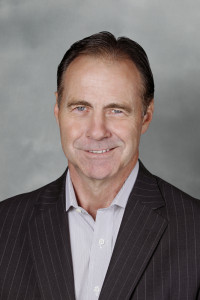What a treat it was to have the chance to interview Bob Cross, an absolute legend in pricing circles, and a mentor to me since reading his book, Revenue Management: Hard-Core Tactics for Market Domination, back in 1997. It really opened up the world of Revenue Management (especially in airlines) to me, and had a profound impact on my pricing future.
I got to hear Bob speak, and then meet him, at a Professional Pricing Society Conference back in 2000. You’ll want to listen to this entire interview, as his story of how he got into pricing is fascinating.
Biography
Robert G. Cross is the Chairman and CEO of Revenue Analytics. He is widely recognized as the foremost expert in the field of Revenue Management. Robert G. Cross guides Revenue Analytics’ strategic vision and provides a wealth of industry expertise. He is actively involved in client work, and his leadership has been instrumental in helping develop leading Revenue Management capabilities for Revenue Analytics clients, including Coca-Cola, Marriott International and InterContinental Hotels Group. Labeled the “Guru of Revenue Management” by The Wall Street Journal, Robert G. Cross, prior to Revenue Analytics, founded Talus Solutions, Inc., a company credited with creating billions of dollars in value for clients such as Delta Air Lines, Ford Motor Company and UPS. Talus was acquired by Manugistics Group, Inc. in December of 2000 for $366 million.
Delta Story
Bob explains how a chemistry major, then a lawyer, ends up in Yield Management at Delta Airlines.
Bob tells the story of how Delta was leaving $200 Million on the table by misallocating seats (selling too many discount seats too soon, thus sacrificing last-minute full-fare seats, and having planes leave ½ empty that could have been sold out with discounted seats).
Revenue management accounted for $300 million in incremental revenue gain, ½ of Delta’s turnaround gain $600 million in 1984.
Bob left Delta and started the first company entirely devoted to the art and science of Revenue Management.
Bill Marriott, Jr. Story
One of my favorite stories Bob told at his PPS speech was how Bill Marriott, Jr. did Revenue Management back in the 1950s, before sophisticated software was available.
I reminded Bob that revenue management is not new, recounting this story from my book, Pricing on Purpose:
Indeed, it may be entering its third millennium as a management technique. We are told that Joseph and Mary had to be accommodated in a stable two thousand years ago because there was no room at the inn. But perhaps the innkeeper had identified them as customers who could not afford a premium rate on a night of peak demand and had decided to hold out for better business. After all, he might have known that there were three kings in town who had yet to find accommodation.
Revenue management strategies add $150M-200M in annual revenue at Marriott.
It uses a “Revenue Opportunity Model,” which measures actual revenue against a theoretical optimal.
Revenue management has spread to Hilton, Holiday Inn, Sheraton, Disney, golf courses, sports, entertainment, operas, retailers, and it literally saved National Car Rental from bankruptcy.
Revenue Management: Hard-Core Tactics for Market Domination, 1997
I read this book in May 1997. There are blurbs from Robert Crandall (American Airlines Yield Management pioneer), Bill Marriott, Jr., and Herb Kelleher from Southwest Airlines fame.
In the Acknowledgements, Bob talks about his late barber, Carol Meinke, who operated a one-chair Barbershop. He tries to convince her to manage supply and demand using pricing!
My father, Sam Baker, was also a barber. Saturday’s were his busiest days, and the last thing you wanted to do was turn away a working gentlemen who would pay full price, and only has weekends to get his hair cut.
So the barbers used to tell the moms bringing in kids on Saturday that the price is cheaper if they come in on Tuesday! This is revenue management in action!:
Sell the right product to the right customer at the right time for the right price.
Excellent Articles on Pricing by Bob
“Milestones in the application of analytical pricing and revenue management,” September 25, 2010
This is an excellent article if you’re interested in the history and diffusion of Yield Management, how it started in the airlines, and diffused into hotels, transportation companies, among others.
Over past few decades, revenue management has added tens of billions to net profits of hundreds of firms.
In 1991 UPS built a pricing department—Using "Target Pricing" it increased its profits in the first year by $100 million.
Fred Smith FedEx attributes 10% revenue growth and 33% profit growth to revenue management and a more “disciplined pricing approach.”
In the early 1990s, Canadian Broadcast Corporation, then ABC, NBC began revenue management to sell advertising.
Ford Motor realized cost-cutting was not the answer, and from the mid-1990s to the end of decade earned $3 Billion in additional profits thanks to better pricing.
“Revenue Management’s Renaissance: A Rebirth of the Art and Science of Profitable Revenue Generation,” February 2009.
“Customer-Centric pricing: The Surprising secret for profitability,” 2005.
Questions
We asked Bob if he sees a trend away from cost-plus pricing? Yes, he does.
Which industries were the best pricers? Used to be airlines, now he’d say hotels.
Which country leads the world in pricing? The United States.
Other Resources
Pricing on Purpose: Creating and Capturing Value, by Ronald J. Baker
Ron is honored to keynote at this year's Professional Pricing Society Conference in Dallas, Texas, on May 7, 2015: “Top Ten Business Myths.”


